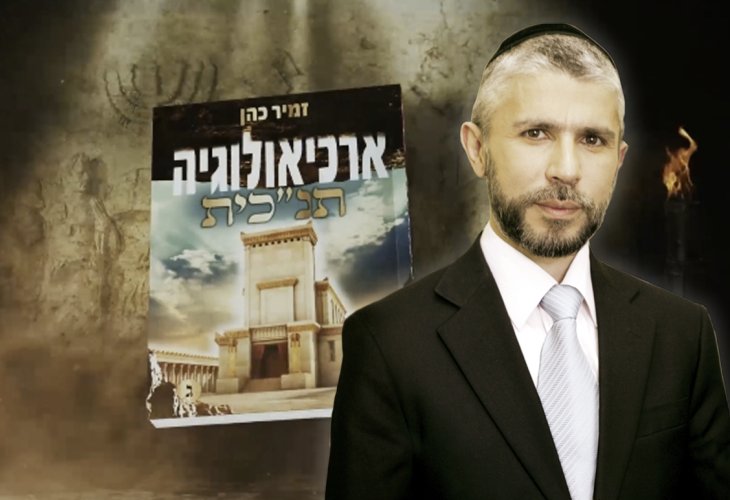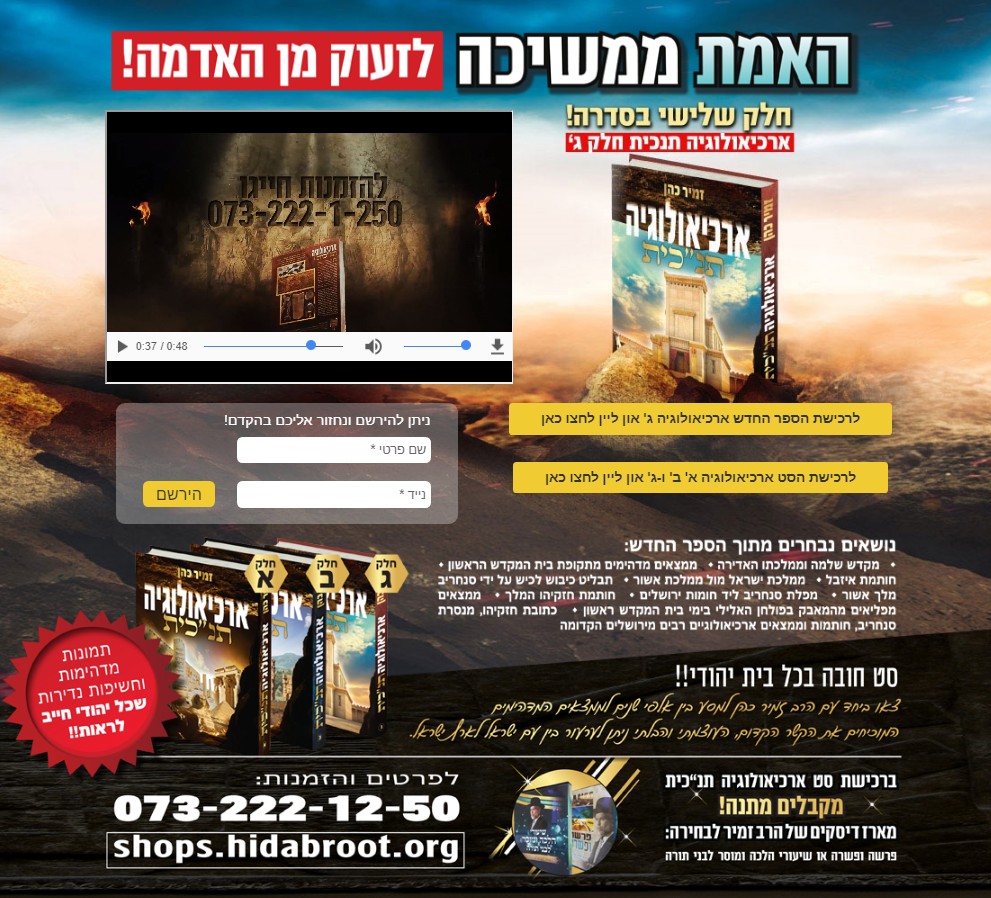Unearthing the Truth: An Interview with Rabbi Zamir Cohen on Biblical Archaeology, Volume 3
Following the widespread acclaim of the previous volumes, the third installment of 'Biblical Archaeology' delves deeper into historical evidence from the era of King Solomon and the First Temple. Rabbi Zamir Cohen discusses the connection between these revelations and UNESCO's decision on Jerusalem, plus the potential for future volumes.

Many have read Rabbi Zamir Cohen's first two books in the 'Biblical Archaeology' series, illustrating archaeological findings that parallel historical events from the Bible. The newly released third book explores the reign of King Solomon and the First Temple, continuing to validate biblical truths through earth's revelations.
These books have not only altered public perception but also impacted scholars and archaeologists who can't ignore the discoveries. "Honest researchers, like Prof. Garfinkel and Dr. Mazar, are captivated by these findings," explains Rabbi Cohen. "Those who previously contested the Bible now find their arguments falling like a house of cards, often staying silent or attempting to justify their past claims."
For those familiar with the Bible, the era of Solomon is considered Israel's 'Golden Age.' Does the book present findings that bolster this view?
"Contrary to what some Tel Aviv professors propagated, claiming the Bible exaggerated Solomon's kingdom and achievements, our book presents evidence of Solomon's grand constructions and ingenious waterworks across the land, along with details about his life, like his unique connection with the Queen of Sheba.
"Few realize that the water supply for the Temple, which needed vast amounts of water for sacrifices, traveled all the way to the Temple Mount via a complex system of channels from springs near Hebron, spanning 68 kilometers! These discoveries, detailed with stunning images by editors Rabbi Nisan Lebron and Dr. Rivka Lebron, were obtained through dedicated site visits, ensuring a high-quality, reliable publication."
Last year, UNESCO declared Jews have no historical link to Jerusalem. How does the book address this?"
"There's nothing more absurd than that decision. The archaeological evidence in Israel undeniably demonstrates, even to the staunchest skeptics, the historical bond between the Jewish people and their land. As Psalms says, 'Truth shall spring from the earth.' The soil of Israel, and especially Jerusalem, yields fascinating finds, like King Hezekiah's seal, vividly featured in the book, among others. Only an organization as blind as that might deny such truths while the sun shines brightly."
From King Solomon to the Exile
Does 'Sennacherib's Prism' fully align with the Bible, and if not, how are discrepancies explained?"
"It's no surprise that Sennacherib, like all rulers of old, omitted his failures. A large relief from his palace in Nineveh, Iraq, shows the conquest of Lachish in Judah by Assyrians under Sennacherib. Yet regarding Jerusalem, he claims to have trapped Hezekiah like a bird in a cage, never boasting of its capture. This aligns with the Bible announcing his miraculous defeat near Jerusalem's walls. Reporting only a siege implies, even to researchers, that he failed to conquer the city. The Lachish relief, showcased in our book, depicts Jewish captives, providing insight into their appearance and attire, highlighting their dignified and modest dress.
What role did idol worship play in the First Temple according to the Bible and archaeological evidence?"
"As known, the period post-Solomon until the First Temple's fall saw erratic shifts between serving Hashem and idol worship. One fascinating find, showcased in the book, is an altar toilet discovered at a pagan shrine, placed where an idol should've been... Scholars believe there's only one explanation. The Bible recounts King Hezekiah's transformation of idol temples into latrines. Here we have an earthborn proof affirming the Bible."
The main site visits for the book, as mentioned, were organized by the editors, to whom Rabbi Cohen expresses deep gratitude. "Seeing these locations and artifacts firsthand is unparalleled," he says. "Years ago, I personally visited most sites and museums, diving into these topics intensely," adds Rabbi Cohen. "Some tours included the late researcher Yehoshua Etzion, author of 'The Lost Bible,' along with renowned photographer Ohad Amzallag."
Will there be a fourth book in the series?"
"The goal is to continue tracing Jewish history through the Babylonian exile, Mordechai and Esther's time, the Second Temple's construction, the era of Antiochus, and events leading to the Temple's demise and the Bar Kochba revolt. Recent discoveries are mesmerizing to Jews and showcase to the world our deep-seated ties to Israel. We anticipate two more volumes are necessary, with Hashem's help we aim to see it through."
To purchase the book, Biblical Archaeology Volume 3"
To purchase the Biblical Archaeology set


